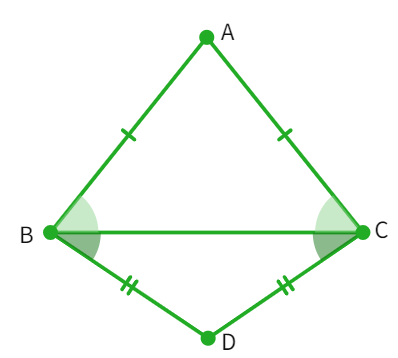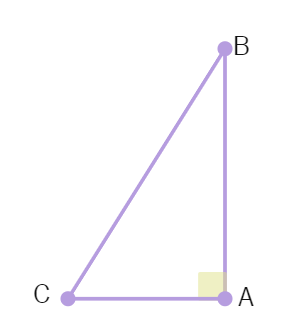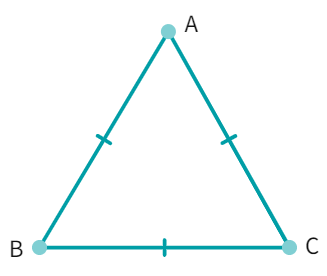Exercise 7.2
1. In an isosceles triangle ABC, with AB = AC, the bisectors of ∠ B and ∠ C intersect each other at O. Join A to O. Show that:

(i) OB = OC
(ii) AO bisects ∠ A
- Given: AB = AC and the angle bisectors of ∠B i.e.
and ∠C i.e. intersect each other at point O. - ABC is an isosceles triangle with AB = AC, thus: ∠B = ∠
1 2 1 2 = ∠ - Since, ∠OBC = ∠OCB i.e.
= - Considering the triangles ΔAOB and ΔAOC, AB = AC (given), AO = AO (common arm) and OB = OC (proven).
- By
congruency : ΔAOB ≅ Δ - By CPCT: ∠BAO = ∠
i.e. AO bisects ∠A. - Hence, proved.
In ∆ ABC, AD is the perpendicular bisector of BC. Show that ∆ ABC is an isosceles triangle in which AB = AC.

Solution:
3. ABC is an isosceles triangle in which altitudes BE and CF are drawn to equal sides AC and AB respectively. Show that these altitudes are equal.

- Considering the triangles ΔAEB and ΔAFC: ∠A = ∠A (common angle), ∠AEB = ∠AFC (as BE and CF are
), AB = AC (given) - By
congruency: Δ ≅ ΔAFC - By CPCT: BE =
- Hence, proved.
ABC is a triangle in which altitudes BE and CF to sides AC and AB are equal. Show that:
(i) ∆ ABE ≅ ∆ ACF
(ii) AB = AC, i.e., ABC is an isosceles triangle.

Solution:
5.ABC and DBC are two isosceles triangles on the same base BC. Show that ∠ ABD = ∠ ACD.

We know that ABC and DBC are two isosceles triangles. We can draw the diagonal AD to form the triangles ΔABD and ΔACD.
- Considering the triangles ΔABD and ΔACD:AD = AD (common arm), AB = AC (ABC is an
triangle) and BD = (BCD is an isosceles triangle) - By
congruency rule: ΔABD ≅ Δ - Therefore, by CPCT: ∠ABD = ∠
- Hence, proved.
6. ∆ABC is an isosceles triangle in which AB = AC. Side BA is produced to D such that AD = AB as shown below. Show that ∠ BCD is a right angle.

- Given that AB = AC and AD = AB. Thus, AB =
= .This means that the triangles ΔABC and ΔACD are triangles. - Considering the triangle ΔABC: AB = AC and ∠ACB = ∠
as they are angles opposite to the sides. - Similarly, consider the triangle ΔACD: AD =
which makes ∠ADC = ∠ - In the case of ΔABC, ∠CAB + ∠ACB + ∠ABC =
° - Substituting values
- To get the equation (1)
- Similarly,in the triangle ΔADC: ∠CAD = 180° –
∠ACD — (2) - From the figure that:∠CAB + ∠CAD = 180° (as BD is a
line) - Adding the equations (1) and (2) we get
- Simplifying:
(∠ACB + ∠ACD) = 180° - Which gives: ∠
= ° - Hence, proved.
ABC is a right angled triangle in which ∠ A = 90° and AB = AC. Find ∠ B and ∠ C.

8.Show that the angles of an equilateral triangle are 60° each.

- Let ABC be an equilateral triangle as shown above.Thus, AB =
= (enter sides in anticlockwise direction) - We also know that: ∠A+ ∠B + ∠C = 180°. Thus,
∠A = 180° i.e. ∠A = ° - Therefore, ∠A = ∠B = ∠C =
° - Thus, all angles of an equilateral triangle are always 60°.
